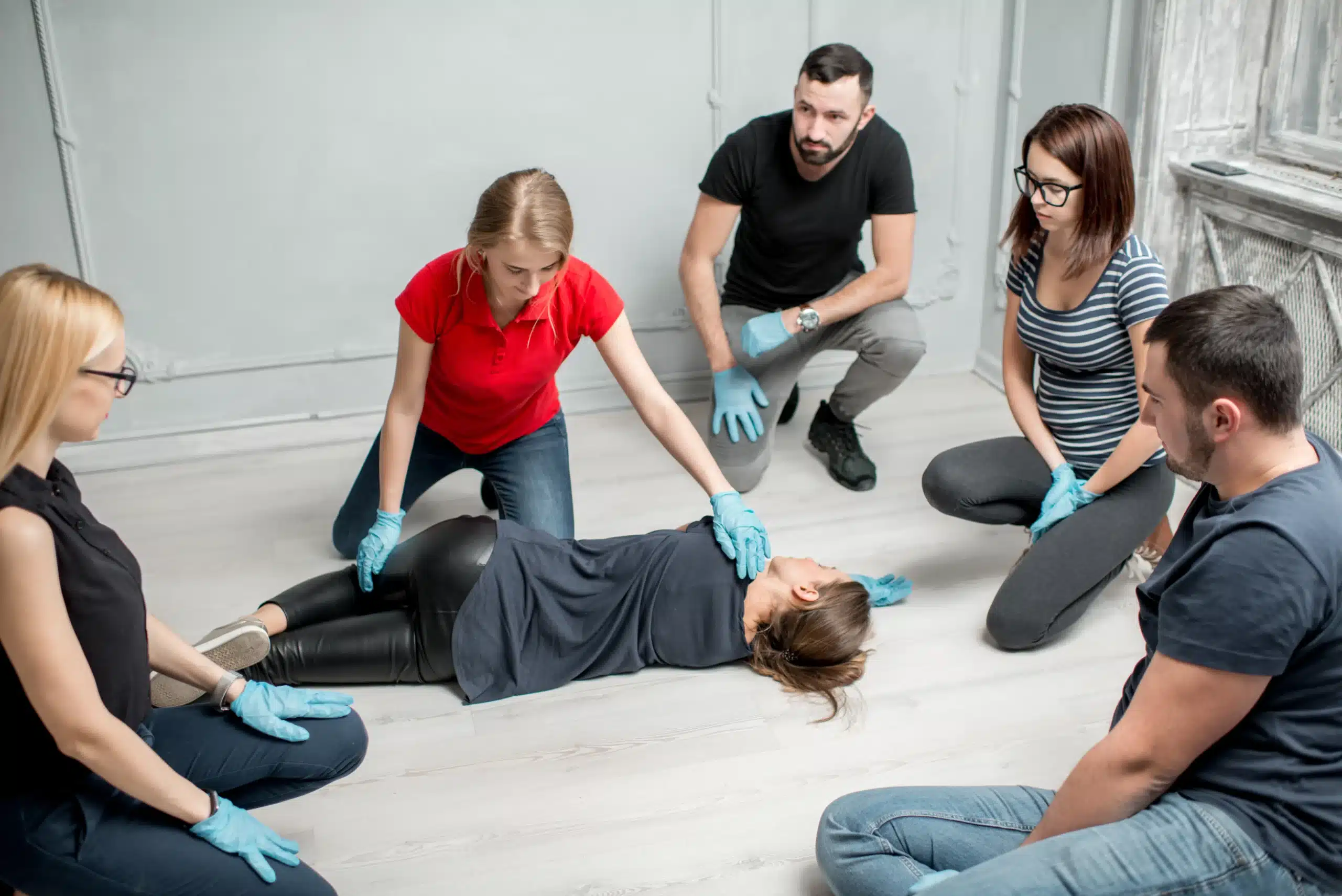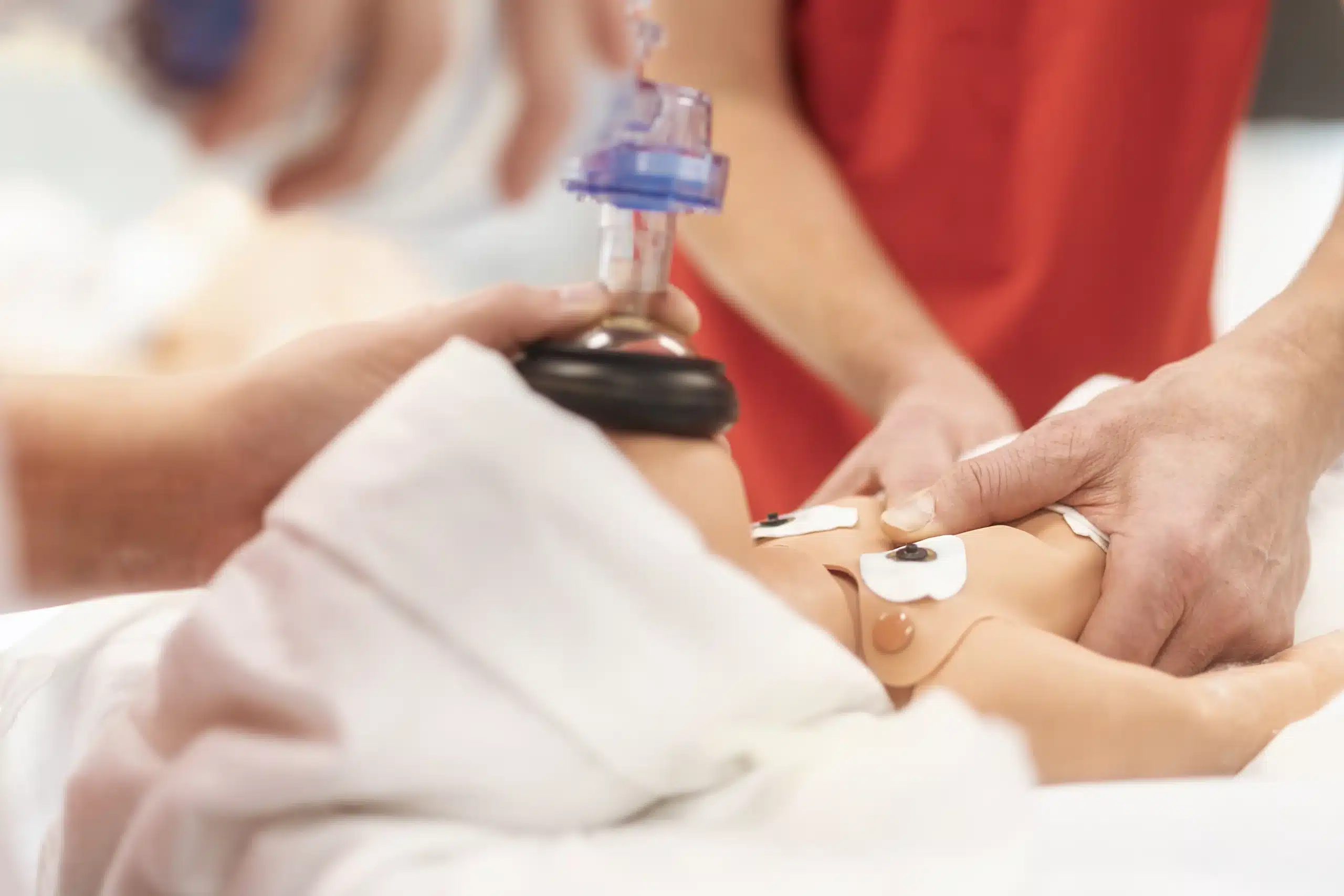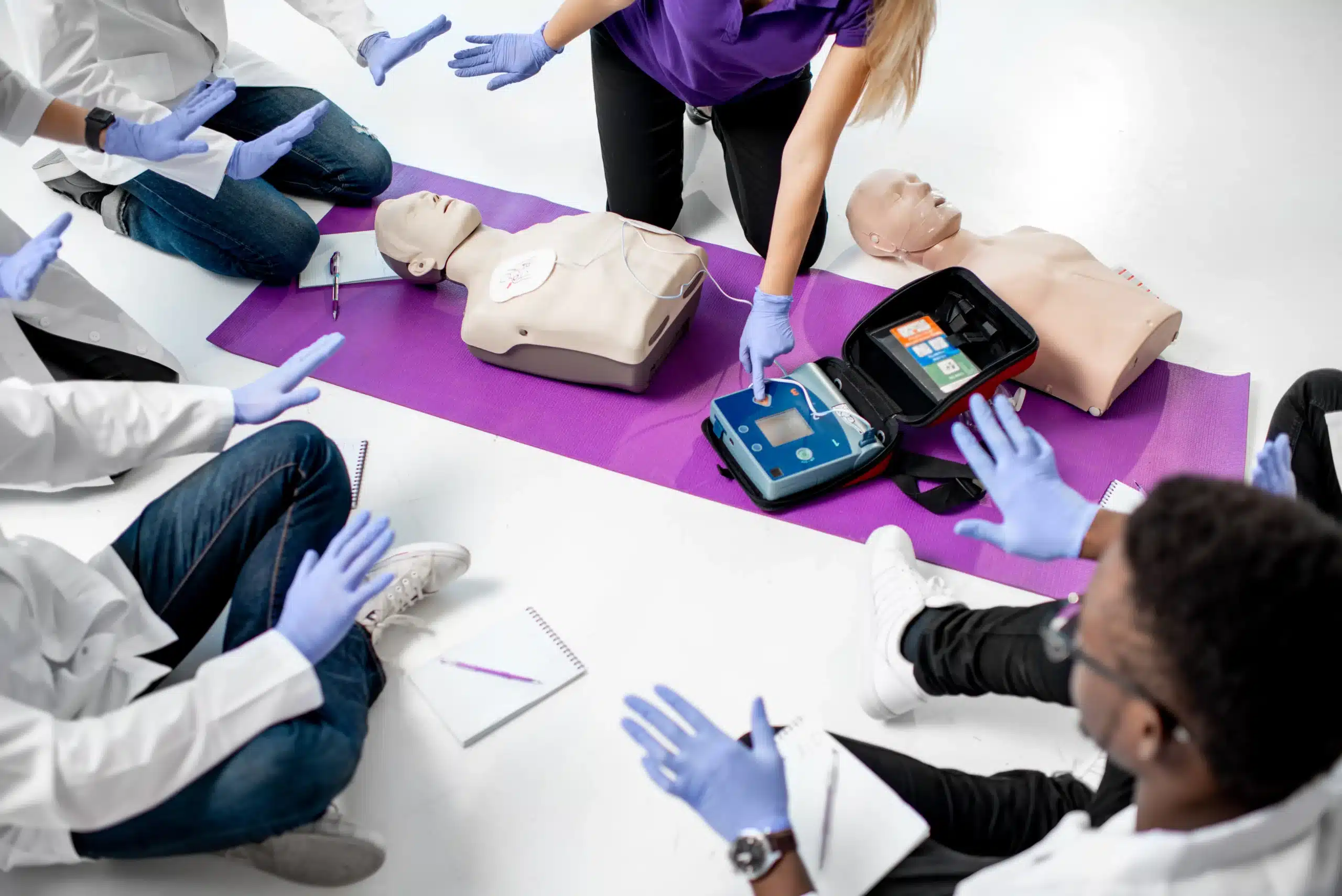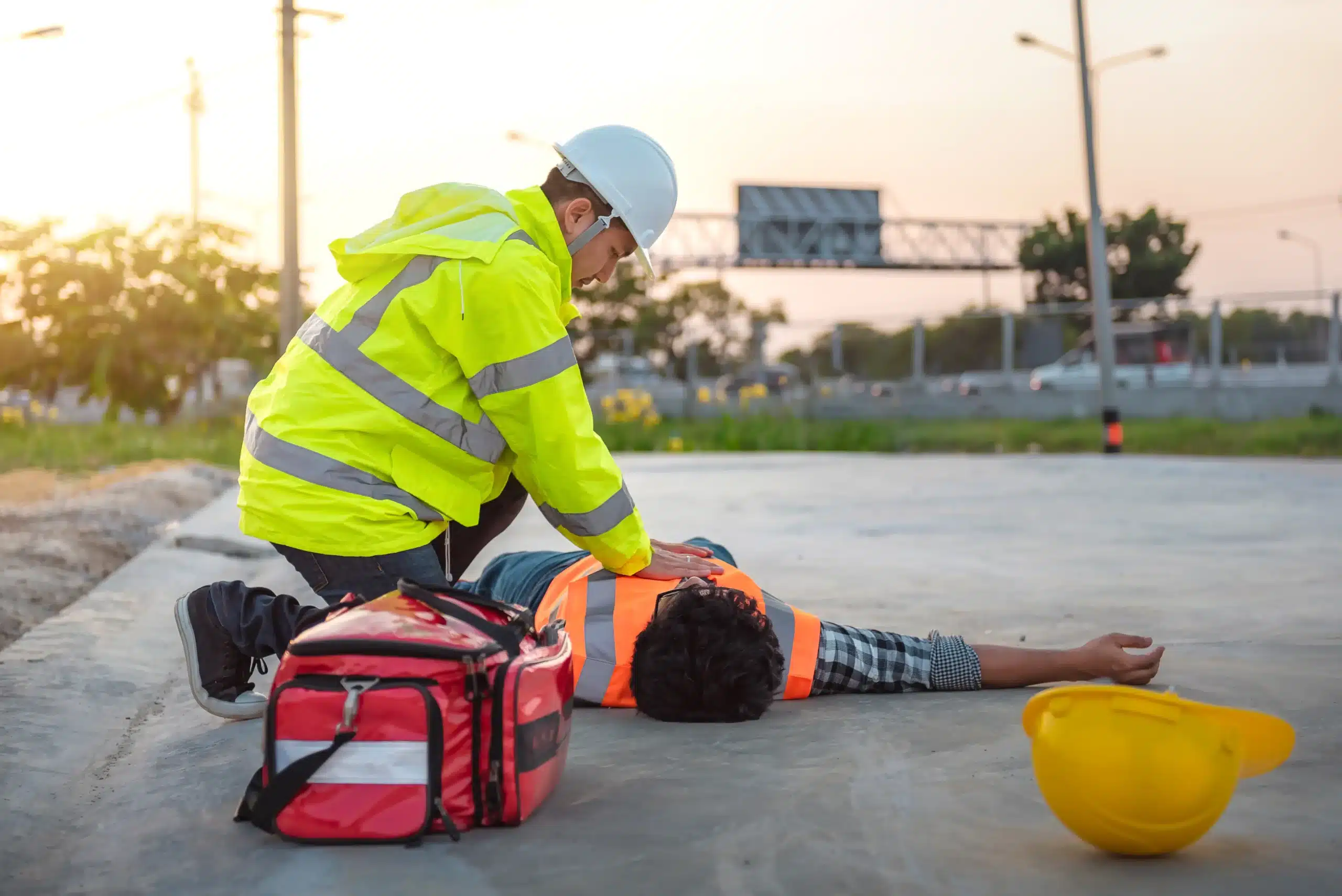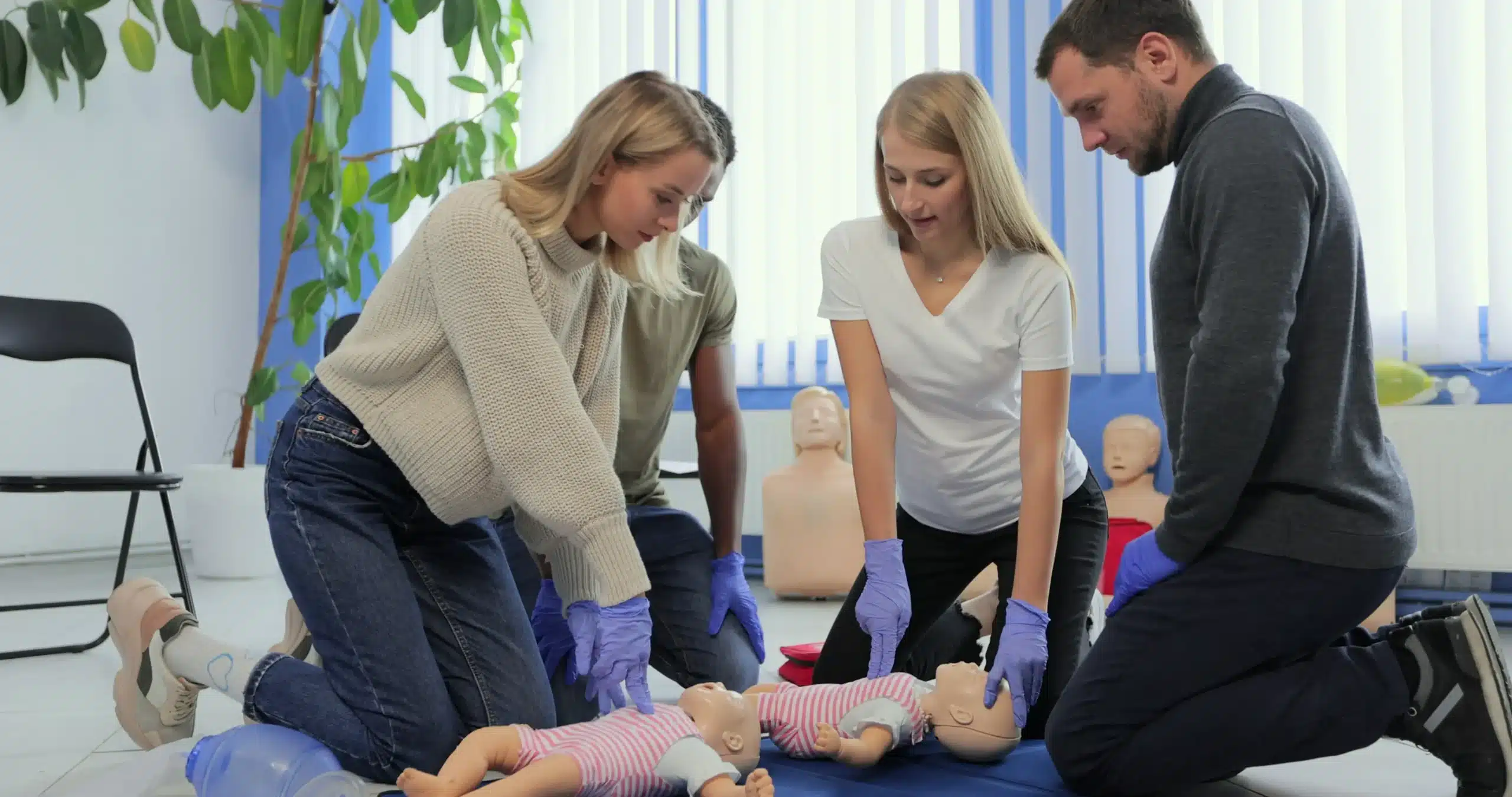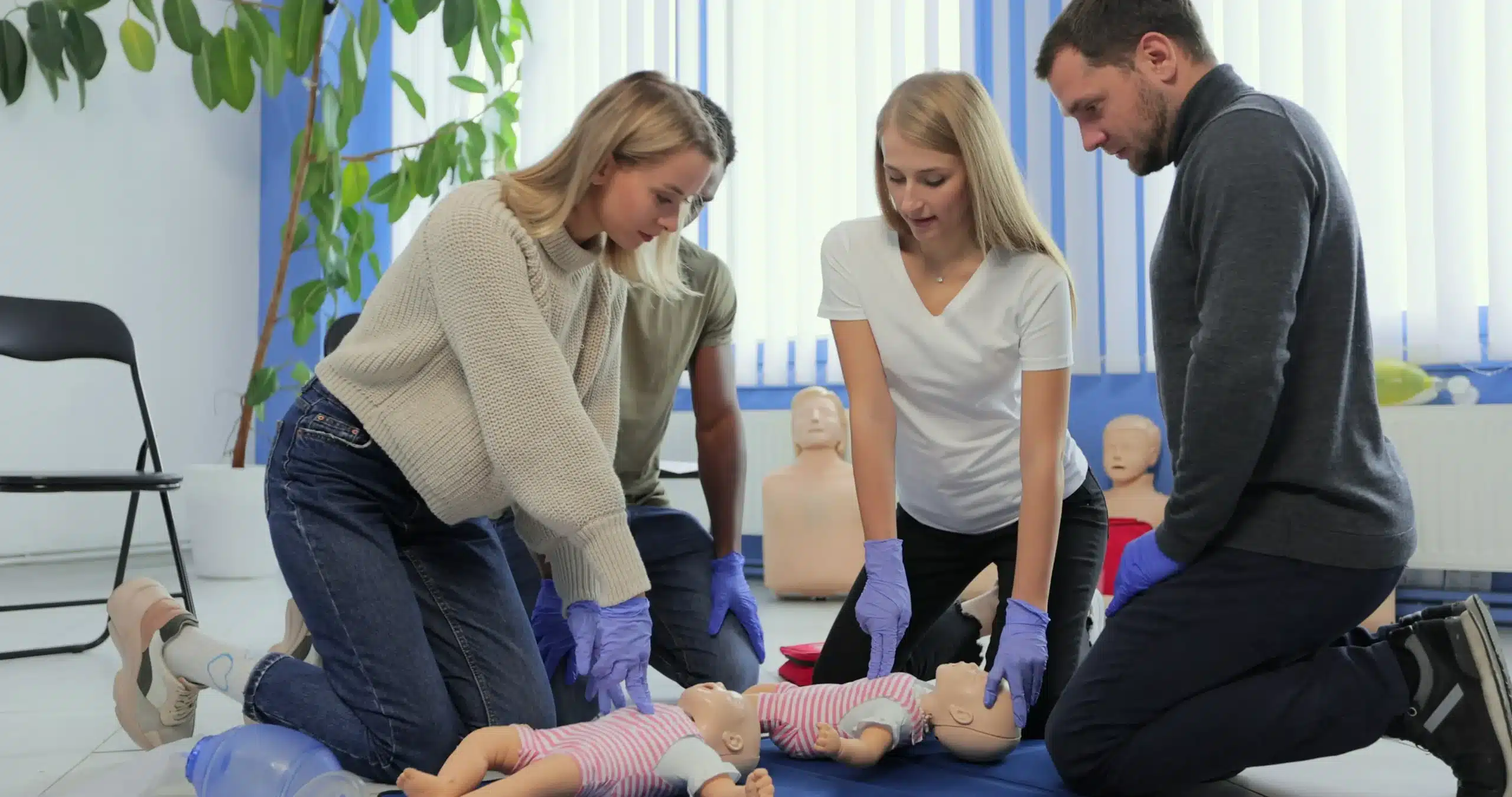Are you a healthcare provider in Oakland, Alameda, or Berkeley searching for reliable and affordable BLS, ACLS, and PALS courses? Maybe you’re a parent, teacher, or caregiver wanting to gain essential lifesaving skills. Understanding the difference between these certifications and finding the right training program can feel overwhelming. This comprehensive guide breaks down everything you need to know about BLS, ACLS, and PALS courses in Oakland, including what each course covers, who should take them, where to find top-rated providers, and how to maintain your certification. We’ll explore key factors like course content, costs, and available discounts, empowering you to make informed decisions about your training. Whether you’re a seasoned healthcare professional or just starting your journey, this guide will help you find the perfect BLS ACLS PALS courses Oakland has to offer.
Key Takeaways
- Choose the right certification: BLS provides fundamental lifesaving skills, ACLS builds upon those for advanced cardiac care, and PALS focuses on pediatric emergencies. Consider your career and personal needs when selecting a course.
- Find a quality training provider: Seek out accredited providers with experienced instructors, flexible scheduling, and a blended learning approach that combines online learning with hands-on practice.
- Maintain your skills: Recertify every two years and regularly practice your skills to stay sharp and confident in emergency situations. Utilize online resources and continuing education to stay informed about the latest guidelines.
What are BLS, ACLS, and PALS?
Knowing the difference between BLS, ACLS, and PALS certifications is important when choosing the right course for your career or personal needs. This section breaks down each course, highlighting key differences and who would benefit most from the training.
Defining BLS, ACLS, and PALS
-
BLS (Basic Life Support): BLS provides the foundational knowledge and skills to respond to life-threatening emergencies. You’ll learn how to perform CPR, use an AED, and relieve choking. BLS certification is often a prerequisite for more advanced courses. It’s essential for healthcare providers, but also beneficial for anyone who wants to be prepared for an emergency. CPR Classes Oakland offers BLS certification courses.
-
ACLS (Advanced Cardiac Life Support): ACLS builds upon BLS skills and focuses on the advanced management of cardiovascular emergencies. This course covers topics like airway management, rhythm recognition, and pharmacology. It’s designed for healthcare professionals who are part of a resuscitation team. Learn more about ACLS courses in Oakland.
-
PALS (Pediatric Advanced Life Support): PALS is specifically tailored to the emergency care of infants and children. Like ACLS, it expands on BLS techniques and addresses pediatric-specific emergencies, such as respiratory distress and shock. Healthcare providers working with children should consider PALS certification.
Key Differences
While all three courses aim to improve patient outcomes in emergencies, they differ in scope and target audience. BLS provides the fundamental skills, while ACLS and PALS offer more specialized training. ACLS is geared towards adult cardiac emergencies, whereas PALS focuses on the unique needs of pediatric patients. Both ACLS and PALS require a strong foundation in BLS.
Who Needs These Courses?
The need for these certifications varies depending on your profession and personal goals.
-
BLS: Anyone can benefit from BLS training, including teachers, coaches, parents, and caregivers. It’s also a requirement for many healthcare professionals.
-
ACLS: This certification is typically required for physicians, nurses, paramedics, and other healthcare providers involved in advanced cardiac life support.
-
PALS: Healthcare professionals who work with infants and children, such as pediatricians, pediatric nurses, and emergency medical technicians, should obtain PALS certification. It’s also valuable for those working in childcare settings. For those considering training for a group, CPR Classes Oakland offers group discounts. They also have a low price guarantee, making their courses accessible.
Top BLS, ACLS, and PALS Course Providers in Oakland
Finding the right training provider is key to a positive and effective learning experience. Here’s a rundown of some of the top BLS, ACLS, and PALS course providers in Oakland:
Safety Training Seminars
Safety Training Seminars offers AHA-accredited courses in CPR, BLS, ACLS, PALS, and First Aid. They cater to both individuals and groups, offering discounts for group registrations. A major plus is their on-site training option, bringing the class directly to your organization. You’ll receive your certification card the same day you complete the course. They proudly serve the Oakland, Alameda, and Berkeley communities.
American Heart Association Training Centers
American Heart Association Training Centers in Oakland offer courses leading to official AHA certification cards, valid for two years. They also utilize the Resuscitation Quality Improvement (RQI) program, a streamlined approach to BLS, ACLS, and PALS certification. The RQI program focuses on high-quality training and preparing students for real-world emergencies.
American Red Cross
The American Red Cross in Oakland provides BLS certification and renewal courses designed for healthcare providers. With class completion times as short as 4.5 hours, they offer a convenient option for busy professionals. Their BLS certification is also valid for two years.
CPR Certification Oakland
CPR Certification Oakland offers AHA-certified CPR and First Aid classes. A standout feature is same-day certification, ensuring you have your card immediately after completing the course. This is particularly helpful if you need quick certification for a job or for personal knowledge.
American HealthCare Academy (AHCA)
The American HealthCare Academy (AHCA) provides online ACLS, PALS, and BLS certification and recertification. Their online format incorporates videos, practice tests, and real-life scenarios for an engaging learning experience. AHCA certifications are valid for two years.
Course Formats and Schedules
Finding the right course format and schedule is key to successfully completing your BLS, ACLS, or PALS certification. Whether you thrive in a traditional classroom or prefer the flexibility of online learning, various options cater to different learning styles and busy schedules. Let’s explore the most common formats:
In-Person Training
In-person training offers a hands-on learning experience, ideal for those who value direct interaction with instructors and peers. Safety Training Seminars, for example, provides AHA-accredited courses at their Oakland location. This format allows for real-time feedback, practice scenarios, and the opportunity to ask questions and clarify concepts immediately. Their extended daily hours (8 am to 10 pm) at 154 Santa Clara Ave, Suite 6, Oakland, CA 94610, make it easier to fit training into your schedule. They also offer group discounts, a great option for workplaces looking to train multiple staff members.
Online and Blended Learning
Online and blended learning programs offer flexibility for those juggling work, family, or other commitments. Providers like the American HealthCare Academy (AHCA) offer online ACLS, PALS, and BLS certification and recertification. These self-paced programs allow you to study when and where it’s most convenient. Blended learning combines online modules with in-person skills sessions, offering a balance of flexibility and hands-on practice. This format can be particularly helpful for reinforcing crucial skills learned online.
Flexible Schedules
Many training providers understand the demands of a busy lifestyle and offer flexible scheduling options. You can find courses that fit your availability, whether you prefer weekday or weekend classes, or even condensed courses completed in a single day. Some providers, like the Red Cross, offer courses as short as 4.5 hours, making it easier to integrate training into your already packed schedule. This flexibility ensures that you can obtain and maintain your certification without significant disruption to your work or personal life.
Course Content and Objectives
This section outlines the core content and objectives of BLS, ACLS, and PALS courses. Understanding the curriculum helps you prepare for the training and grasp the importance of each certification.
BLS Curriculum
The Basic Life Support (BLS) curriculum equips you with fundamental skills to recognize and respond to life-threatening emergencies like cardiac arrest. The course emphasizes high-quality CPR, including chest compressions and rescue breaths, and the prompt use of an automated external defibrillator (AED). Improving patient survival rates is the ultimate goal, and the BLS curriculum provides the foundational knowledge and skills to achieve this. You’ll learn to quickly assess a situation, perform effective CPR, and use an AED if necessary. This training is crucial for anyone working in healthcare and also provides valuable skills for everyday life. For more information on BLS certification, visit our BLS page.
ACLS Curriculum
The Advanced Cardiac Life Support (ACLS) curriculum builds upon the foundation of BLS. It’s designed for healthcare providers managing cardiac arrest and other cardiovascular emergencies. Early recognition of cardiac arrest is key, along with swiftly activating emergency response systems. The curriculum covers advanced interventions such as medication administration and advanced airway management. Effective team dynamics and communication are also essential components of the training, ensuring coordinated and efficient responses during critical situations. Learn more about our ACLS course.
PALS Curriculum
The Pediatric Advanced Life Support (PALS) curriculum focuses on the specific needs of infants and children facing critical illnesses. Healthcare professionals learn to assess and manage pediatric emergencies, including respiratory distress, shock, and cardiac arrest. The course emphasizes effective team dynamics and communication—crucial for successful outcomes in pediatric emergencies. PALS training provides the specialized knowledge and skills needed to provide the best possible care for young patients. Our NRP course covers similar skills for newborn resuscitation.
Hands-on Practice
Hands-on practice is integral to BLS, ACLS, and PALS training. These courses use simulations and real-life scenarios to reinforce learning and build confidence. Participants practice their skills in a controlled environment, allowing them to apply their knowledge effectively. This practical experience develops both cognitive understanding and the psychomotor skills necessary for effective CPR and emergency response. The goal is to prepare you to handle real-world emergencies with competence and composure. Check out our group discounts for hands-on training opportunities. We also offer a low price guarantee.
Costs and Discounts
Understanding course fees and available discounts is an important part of planning your training. Let’s break down the typical costs associated with BLS, ACLS, and PALS certification.
Course Pricing
Course prices vary depending on the provider, the type of course (BLS, ACLS, or PALS), and whether you choose in-person or blended learning. For example, the American Red Cross offers BLS certification, sometimes as short as 4.5 hours. Generally, PALS and ACLS courses are more expensive than BLS due to their advanced content and longer duration. Check with providers like Safety Training Seminars for up-to-date pricing. They offer a low price guarantee so you can be confident you’re getting a good deal.
Group Rates
If you’re coordinating training for a group, look for providers offering group discounts. Many providers understand the need for affordable solutions for larger groups and offer reduced per-person rates. These discounts can make a significant difference in your overall training budget. Contact providers directly to discuss your group’s needs and inquire about special pricing. Safety Training Seminars offers discounts for group bookings, making it a cost-effective choice for organizations.
Renewal Costs
Your BLS, ACLS, and PALS certifications are typically valid for two years. Afterward, you’ll need to renew to stay current. Renewal courses are often shorter and less expensive than the initial certification. The American Red Cross provides recertification courses, allowing you to maintain your credentials without significant expense. Factor in these renewal costs when planning your long-term training expenses.
Certification and Validity
Once you’ve completed your BLS, ACLS, or PALS course, you’ll want to understand how certification works and how long it’s valid. This section covers everything you need to know.
Exam Requirements
Exam requirements vary slightly depending on the course and the training center. Generally, BLS, ACLS, and PALS courses involve a combination of online coursework and hands-on skills testing. Some providers, like Safety Training Seminars, use the RQI online learning system combined with a skills evaluation using a voice-activated mannequin. You can explore their BLS course, ACLS course, and PALS course details on their website. Other providers, such as the Red Cross, offer more traditional classroom-based learning. Regardless of the format, expect a skills test to demonstrate your competency in the techniques you’ve learned. These courses are designed for healthcare providers and can often be completed in a single day.
Certification Validity
After successfully completing the required coursework and skills test, you’ll receive an official American Heart Association (AHA) certification card. This certification is typically valid for two years. This standard timeframe helps ensure healthcare professionals stay current with the latest guidelines and maintain their skills.
Recertification
Medical best practices are always evolving, so recertification is essential for healthcare providers. Staying current with your certifications ensures you can deliver the best care in emergencies. The process typically involves taking another BLS, ACLS, or PALS course before your current certification expires. Many providers offer recertification courses covering updated guidelines and refreshing essential skills. You can find recertification information through providers like Safety Training Seminars or the American Heart Association. Regularly refreshing your knowledge and skills is crucial for effective patient care, as highlighted in studies like this one on the impact of ACLS training. Online resources and continuing education can also help you stay sharp between recertifications.
Choosing the Right Provider
Finding the right training provider is key to a positive and effective learning experience. Whether you’re a healthcare professional maintaining certifications or learning CPR for the first time, the factors below will help you make the best choice.
Accreditation and Instructors
First, confirm your chosen course is accredited by a recognized organization. Safety Training Seminars offers American Heart Association (AHA)-accredited courses, ensuring your training meets industry standards. The American Red Cross is another reputable option for accredited BLS training. Look for providers with experienced, certified instructors who can offer personalized guidance. A knowledgeable instructor can make all the difference in your confidence and skill level.
Curriculum
A comprehensive curriculum is essential for effective training. Consider programs like Safety Training Seminars, which combine online learning with hands-on skills testing. This blended learning approach gives you flexibility while ensuring you get crucial practical experience. Also, check if the provider offers supplemental materials to reinforce your learning after the course.
Flexibility and Support
Life gets busy, so choose a provider with flexible scheduling. Safety Training Seminars offers classes for both individuals and groups, often with discounts for group registrations. Some providers will even come to you for on-site training. If your schedule is demanding, explore online or blended learning options, as discussed in this article on online CME. A responsive provider can answer your questions and provide assistance throughout your training.
Benefits of Training
Getting certified in Basic Life Support (BLS), Advanced Cardiovascular Life Support (ACLS), and Pediatric Advanced Life Support (PALS) offers significant advantages, from potentially saving lives to advancing your career. Let’s explore some key benefits:
Prepare for Emergencies
These certifications equip you with the skills to confidently handle emergencies. BLS training provides the foundational knowledge and techniques for CPR, recognizing life-threatening situations, and using an AED. ACLS certification builds upon this foundation, focusing on the advanced treatment of cardiac arrest, stroke, and other cardiovascular emergencies. PALS certification specifically addresses the unique needs of infants and children in emergencies. Studies show that immediate CPR and early defibrillation drastically improve survival rates, highlighting the critical role of these certifications. Having these skills can make a profound difference during those crucial first few minutes of an emergency.
Advance Your Career
BLS, ACLS, and PALS certifications are highly valued in healthcare and related fields. For healthcare professionals, these certifications demonstrate a commitment to high-quality patient care and can lead to more advanced roles and responsibilities. BLS certification is often a prerequisite for many healthcare positions, while ACLS and PALS certifications can significantly enhance career prospects. These certifications can also benefit professionals in other fields, such as education, childcare, and fitness, where responding to emergencies may be required. Holding these certifications can make you a more competitive candidate.
Improve Patient Outcomes
Ultimately, the goal of BLS, ACLS, and PALS is to improve patient outcomes. By providing standardized training and emphasizing a systematic approach, these certifications help healthcare teams work together seamlessly. Formal training of CPR teams has been shown to drastically improve survival rates and survival to hospital discharge rates following cardiac arrest. These certifications empower healthcare providers to deliver timely and effective interventions, leading to better patient outcomes. They also instill confidence in healthcare professionals, allowing them to act decisively and effectively in stressful situations.
Maintaining Your Certification
Once you’ve earned your BLS, ACLS, or PALS certification, staying current is key. Knowing how to manage your time, refresh your skills, and find the resources you need makes recertification straightforward and keeps your skills sharp.
Manage Your Time
Juggling work, family, and other commitments can make finding time for recertification feel overwhelming. Thankfully, online resources and flexible learning options help you fit training into your busy schedule. Online certification and training programs offer convenient, self-paced learning, allowing you to study when and where it works for you. This approach is especially helpful for busy professionals like nurses, who can complete continuing education credits on their own time. Check with providers like Safety Training Seminars who offer blended learning that combines online coursework with in-person skills sessions.
Retain Your Skills
Maintaining proficiency in BLS, ACLS, and PALS requires more than just renewing your certification. Regularly practicing your skills is crucial for responding effectively in real-life emergencies. Consider joining refresher courses or workshops to stay up-to-date on the latest guidelines and techniques. Even simple steps like reviewing your course materials periodically or practicing with colleagues can significantly improve your retention. For additional guidance on mastering essential skills, explore resources like those offered by Cascade Training Solutions.
Access Resources
Staying informed about the latest advancements and updates in emergency cardiovascular care is essential for maintaining your certification. Take advantage of online resources, such as the American Heart Association website, for current guidelines and recommendations. Many training providers, including Safety Training Seminars, also offer continuing education and refresher courses. These resources can be invaluable for professionals, ensuring they have the knowledge and skills to provide the best possible care. For those seeking PALS certification, resources like Comfikare CPR offer valuable information and training options.
Related Articles
- BLS ACLS PALS Courses in Oakland: Your Complete Guide – Oakland CPR Classes
- Advanced Cardiac Life Support in Oakland: Find the Right Course – Oakland CPR Classes
- ACLS Courses in Oakland: Your Complete Guide – Oakland CPR Classes
- BLS Certification Alameda: The Ultimate Guide – Oakland CPR Classes
- BLS Renewal Oakland: Your Easy Guide to Recertification – Oakland CPR Classes
Frequently Asked Questions
How do I choose between BLS, ACLS, and PALS?
The best course for you depends on your current role and career goals. BLS provides a foundation in life-saving techniques and is suitable for anyone, especially those in healthcare. ACLS is designed for healthcare professionals who manage cardiac emergencies, while PALS focuses on the specialized care of infants and children. If you’re unsure, consider your workplace requirements and desired level of expertise.
What if I have a busy schedule and can’t attend regular classes?
Many providers offer flexible options like online courses, blended learning (a mix of online and in-person sessions), and weekend or evening classes. Some courses can even be completed in a single day. Look for a provider that fits your scheduling needs.
How much do these courses cost, and are discounts available?
Course costs vary depending on the provider and the type of certification. BLS courses are generally less expensive than ACLS and PALS. Many providers offer discounts for group registrations, so check if that applies to you. Also, inquire about a low-price guarantee to ensure you’re getting a competitive rate.
How long are these certifications valid, and how do I renew them?
BLS, ACLS, and PALS certifications are typically valid for two years. Renewal involves completing a recertification course before your current certification expires. These courses are often shorter than the initial certification course and cover updated guidelines.
What if I need CPR certification quickly?
Some providers offer same-day certification, meaning you receive your certification card immediately after completing the course. This is a great option if you need certification for a new job or other urgent situations. Check with various providers to see if they offer expedited certification.



